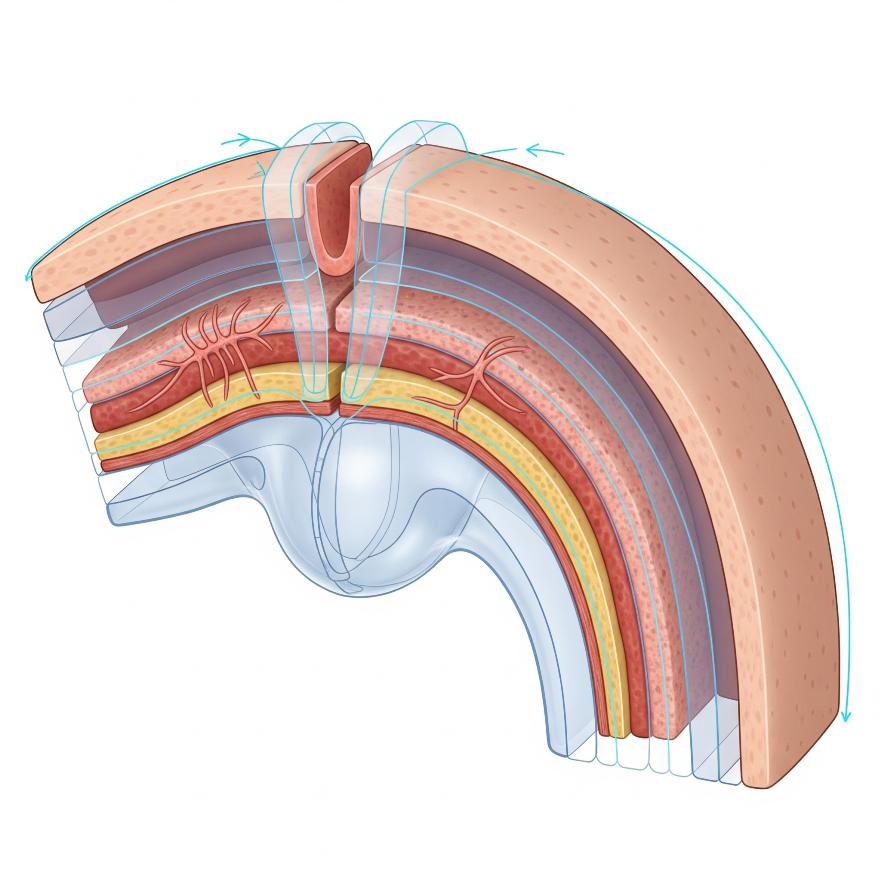Peyronie’s disease is a condition that affects many men, yet it’s often discussed in whispers, if at all. Characterized by the development of scar tissue (plaque) inside the penis, it can lead to a noticeable curve or bend, pain, and even erectile dysfunction. While the symptoms can be distressing and impact a man’s physical and emotional well-being, it’s crucial to remember that Peyronie’s disease is a recognized medical condition with available treatments and a strong community of support.
What Exactly is Peyronie’s Disease?
Imagine your penis has a strong, elastic sheath called the tunica albuginea, which helps it become firm during an erection. In Peyronie’s disease, instead of healthy, flexible tissue, hardened scar tissue or “plaque” forms within this sheath. This plaque is inelastic, meaning it doesn’t stretch like the rest of the penis during an erection. As a result, the penis can curve, bend, or even develop indentations, much like an hourglass shape.
This curvature can range from mild to severe, making sexual intercourse difficult, painful, or even impossible. Beyond the physical impact, Peyronie’s disease can also lead to significant emotional distress, including anxiety, depression, and relationship challenges.
The Two Phases: Acute and Chronic
Peyronie’s disease typically progresses through two phases:
- Acute Phase: This is the initial stage, usually lasting from 6 to 18 months. During this time, the plaque forms, and you might experience pain in the penis (with or without an erection) and a worsening of the curvature. The changes in shape can be active during this period.
- Chronic (Stable) Phase: After the acute phase, the plaque typically stabilizes, meaning the curvature and pain (if any) stop worsening. Pain often subsides in this phase, although it can sometimes persist, especially during erections. Erectile dysfunction can also develop or become more pronounced during this stage.
What Causes the Curve?
While the exact cause isn’t always clear, Peyronie’s disease is often linked to:
- Trauma to the Penis: This is the most commonly suspected cause. Minor injuries to the penis, often sustained during vigorous sexual activity or sports, can lead to bleeding and inflammation. The body’s healing response, if abnormal, can result in the formation of scar tissue. It’s important to note that you may not even recall a specific injury.
- Connective Tissue Disorders: Men with certain connective tissue disorders, such as Dupuytren’s contracture (a hand condition), may be more prone to developing Peyronie’s disease.
- Genetics: There may be a genetic predisposition, meaning it can run in families.
- Autoimmune Conditions: In some cases, an autoimmune response where the body’s immune system attacks healthy penile tissue might contribute.
Recognizing the Signs:
If you experience any of the following, it’s advisable to consult a urologist:
- Penile Curvature: A noticeable bend or curve in the penis, especially during erections, that wasn’t there before or has worsened.
- Pain: Discomfort or pain in the penis, often during erections, but sometimes even when flaccid.
- Lumps or Hardened Areas: You might be able to feel discrete, hard lumps or bands of tissue under the skin of your penis.
- Loss of Length or Girth: The penis may appear shorter or narrower, sometimes with an “hourglass” indentation.
- Erectile Dysfunction (ED): Difficulty achieving or maintaining an erection firm enough for sexual intercourse.
- Difficulty with Sexual Intercourse: The curvature or pain may make sex challenging or impossible for you or your partner.
Seeking Support and Treatment:
The good news is that Peyronie’s disease is treatable, and early diagnosis can lead to better outcomes. Don’t suffer in silence! Here’s what you can expect and how to find support:
- Consult a Urologist: This is the most crucial step. A urologist, a specialist in male reproductive and urinary health, can accurately diagnose Peyronie’s disease through a physical examination and, if necessary, imaging tests like ultrasound.
- Treatment Options: Treatment depends on the phase of the disease, the severity of your symptoms, and your individual needs. Options include:
- Watchful Waiting: For mild cases with minimal impact, a “wait and see” approach might be recommended.
- Oral Medications: While no oral medication has been definitively proven to cure Peyronie’s, some may help manage pain or improve erectile function.
- Injections: Medications can be injected directly into the plaque to help break down the scar tissue and reduce curvature. Collagenase clostridium histolyticum (Xiaflex) is one FDA-approved injectable treatment.
- Penile Traction Therapy: Devices designed to gently stretch the penis over time may help reduce curvature and preserve length.
- Surgery: For severe cases where non-surgical treatments haven’t been effective or the curvature is significantly impacting sexual function, surgical options are available to straighten the penis. These can involve shortening the unaffected side, lengthening the affected side with grafts, or, in some cases, penile implants for men with severe ED.
- Emotional and Psychological Support: The impact of Peyronie’s disease extends beyond the physical. It’s common to experience anxiety, depression, and relationship strain.
- Talk to Your Partner: Open communication with your partner is vital. Understanding and support from them can make a huge difference.
- Support Groups: Connecting with others who have Peyronie’s disease can be incredibly validating and provide valuable insights and coping strategies.
- Counseling/Sex Therapy: A therapist specializing in sexual health can help you navigate the emotional challenges and improve intimacy.
The Takeaway:
Peyronie’s disease is a real and often challenging condition, but you are not alone. By understanding the disease, recognizing its symptoms, and actively seeking professional medical and emotional support, you can take control of your health and work towards a better quality of life. Don’t hesitate to reach out to a urologist if you suspect you have Peyronie’s disease – there are effective ways to manage the curve and find the support you deserve.

